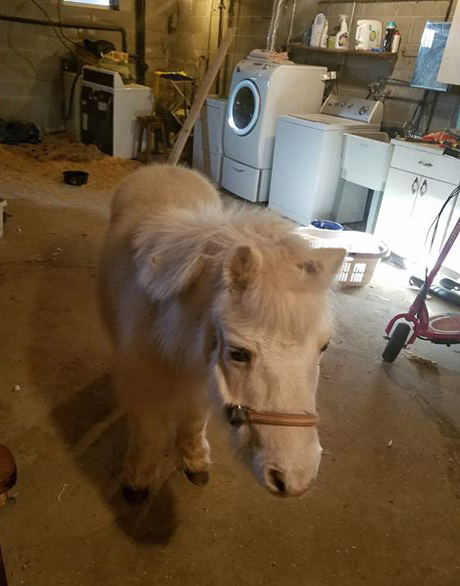35-Year-Old Horse Rides Out Arctic Freeze in Owner’s Basement
By: Brittany Bevis
The majority of Americans are feeling the effects of an arctic freeze that hit the country this week thanks to a scientific phenomena known as the polar vortex. What is the polar vortex exactly?
The National Oceanic and Atmospheric Administration (NOAA) describes the vortex as a large area of cold air and low pressure that typically stays around the north and south poles. However, during the wintertime, when the vortex becomes less stable and expands, it sends cold air south with the jet stream. What that has meant for millions of Americans this week is record shattering wind chills anywhere from 40-65 degrees below zero.
The polar vortex is no joke. According to news reports, 21 people have perished as a result of the deadly temperatures, thousands of flights have been cancelled, and schools and businesses are closed as many areas approach record low temperatures. Chicago’s low was -21F on Thursday; Rockford, Illinois reported -31F, and it was -42F in Park Rapids, Minnesota (DailyMail).
Understandably, there has been much concern about people and animals living outside during this arctic freeze. An anonymous Good Samaritan paid for 70 hotel rooms for a group of Chicago’s homeless population during the entire week of the winter storm. Shelter, heated water buckets, extra feed and hay, and warm blankets are among the extra precautions people are taking with their horses during the icy storm. But what about those that are too young, old, or sick to weather, the weather, outside?
Gail Lynn of Wellington, Ohio took a different approach with her 35-year-old miniature horse named Stoney, who is living in her basement to make it through the arctic freeze.
“I have owned Stoney since he was four years old. My show horse spends his winters at a local boarding barn, so Stoney is my only horse at home during the winter. With no other warm bodies in my barn, it stays very cold. The temperature was in the negative numbers in Wellington, OH, yesterday and today. With the wind chill, it was more than 30 below zero.”
While Stoney is very healthy and in excellent shape for his age, Gail was concerned about his lungs and ability to breath in the frosty temperatures, so Stoney moved indoors.
“I’m lucky enough to have a large basement with a ramp that leads directly to it, so I thought it was best for his health to come in for a few days. I put down shavings, and he uses that as his bathroom. I’ve had him for so long, I know his habits. He’s loose in the unfinished half of my basement.”
We’re sure that Stoney appreciates the warmth and comfort of his temporary home, but what’s it like for Gail to have a horse in her basement?
“Honestly, I love having him inside! He helped me do laundry yesterday by nuzzling through my clothes basket, and it’s quite nice to be greeted by my horse when I walk downstairs! He will go back out to his stall and pasture as soon as the weather breaks.”
What are you doing to keep your horses safe and warm during this winter weather?
Related News:
What is the 2019 Polar Vortex?- Weather.gov
Beautiful Photos of a Frozen Landmarks- Daily Mail
Polar Vortex Fallout- Frozen Water Pipes, How to Thaw and Prevent Them From Freezing- USA Today
A Closer Look at the Polar Vortex’s Dangerously Cold Winds- Graphic- NY Times
Polar Vortex 2019- The Coldest Weather Ever Recorded in Every State- Reno Gazette Journal











